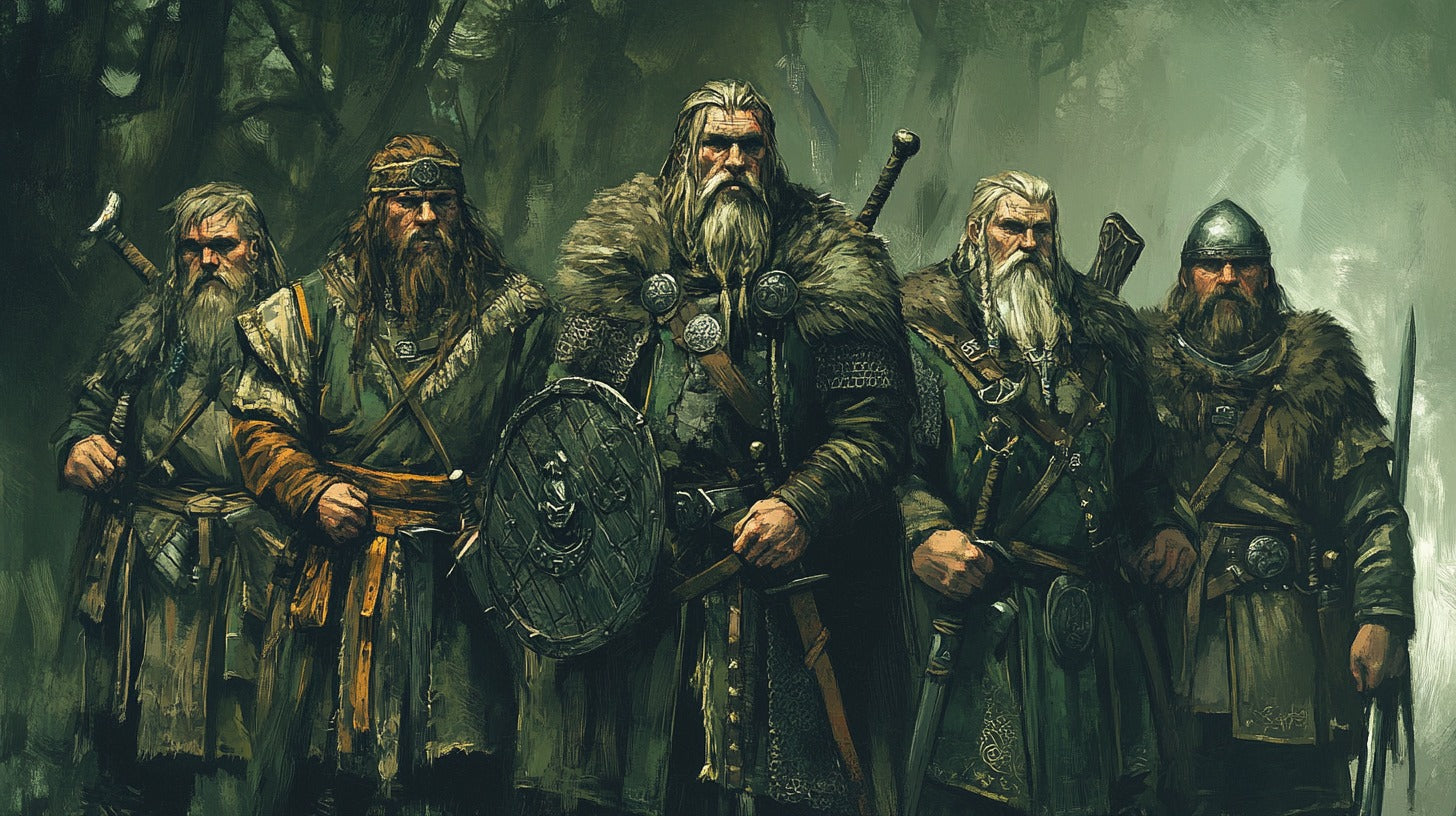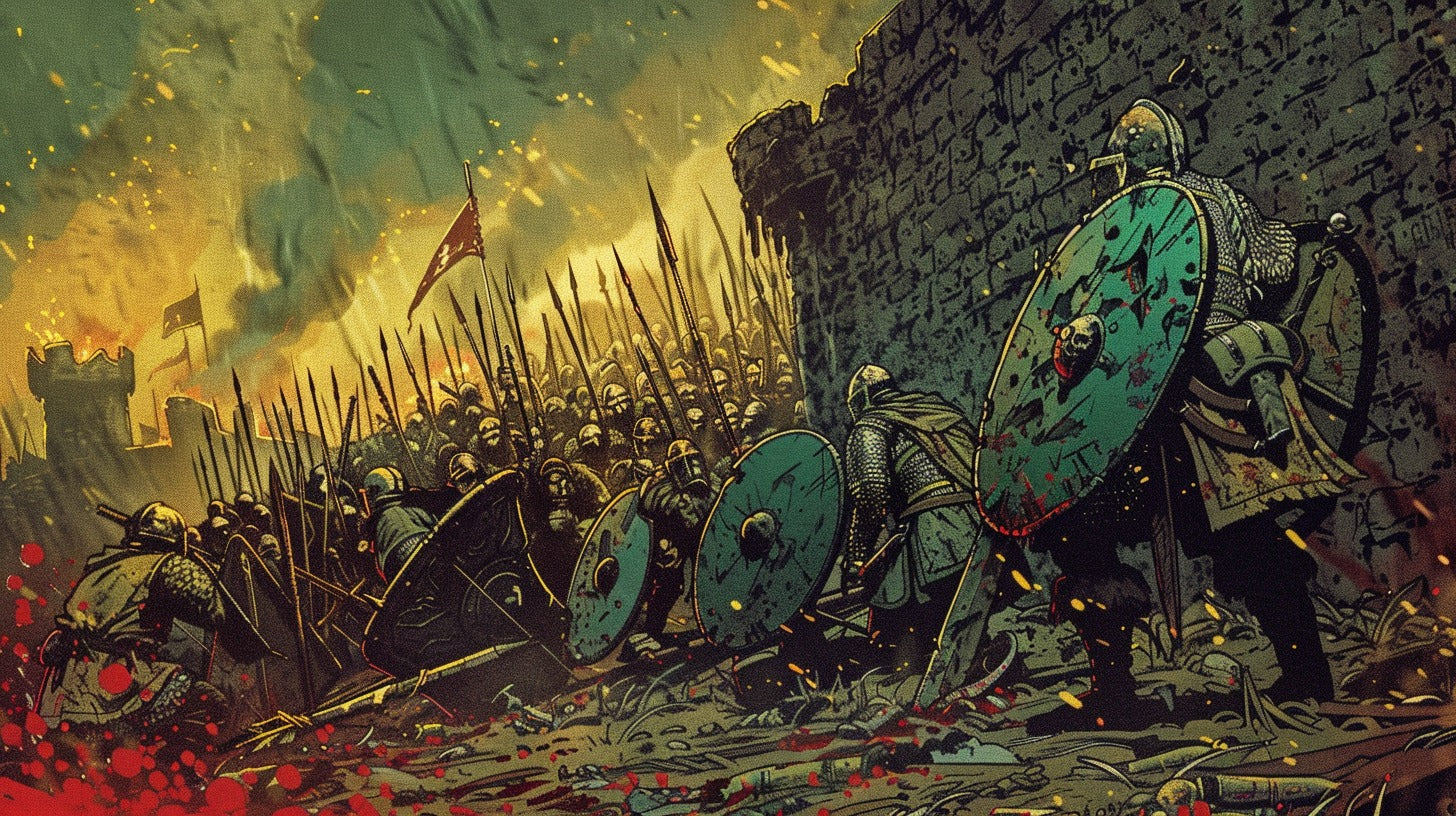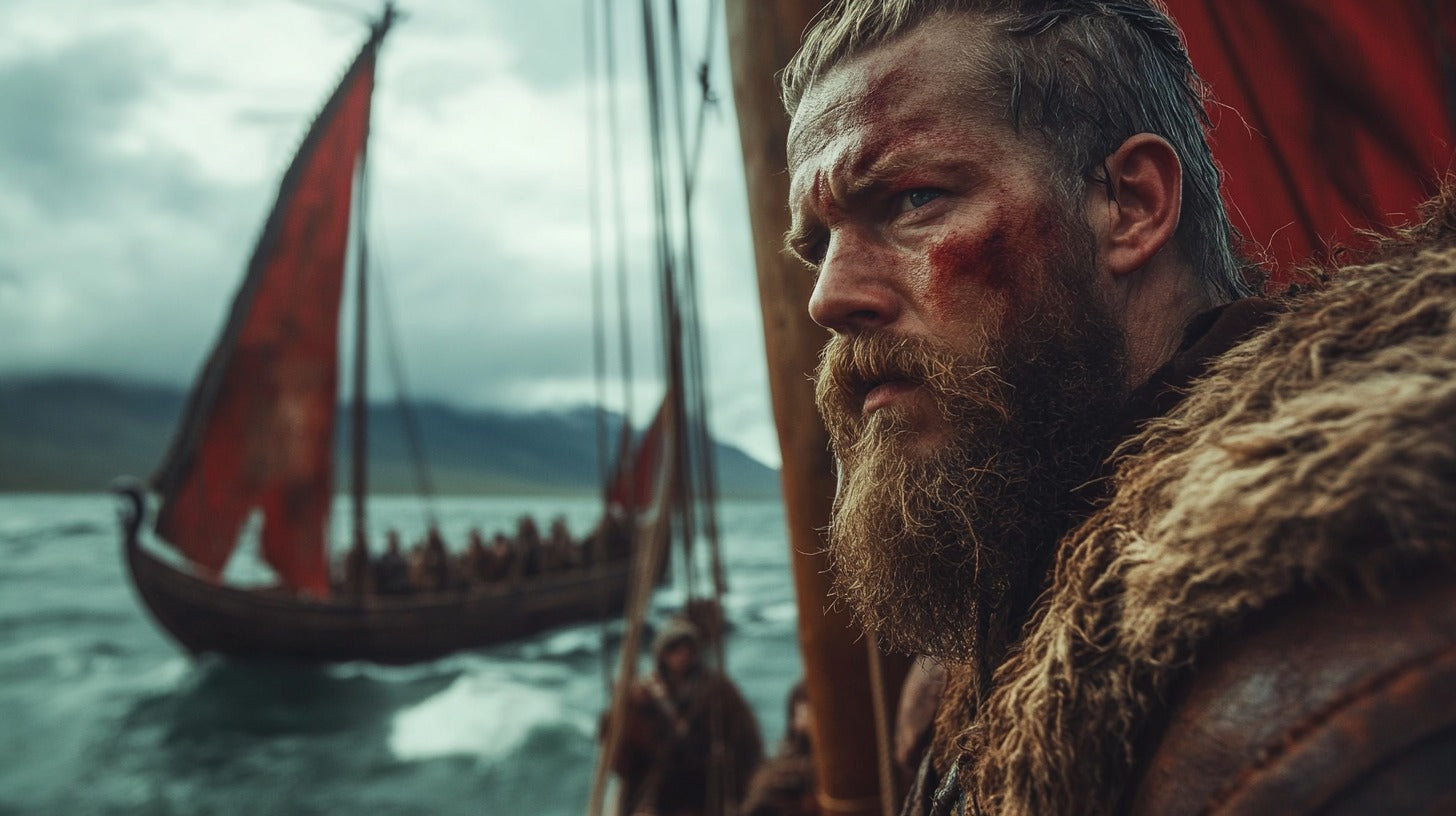
The Norse-Gaels: A Fascinating Fusion of Norse and Celtic Cultures
In the misty annals of history, where the roar of longships mingles with the lilt of Gaelic song, there emerged a people as complex and intriguing as the lands they inhabited. The Norse-Gaels, born from the tumultuous union of Viking raiders and Irish natives, wove a tapestry of culture that would forever alter the fabric of the British Isles. Their story is one of conflict and cooperation, of conquest and assimilation, a saga worthy of the skalds of old.
Origins of the Norse-Gaels

The Viking Age and Irish Shores
The tale begins with the howling winds that carried Norse longships across the frigid North Sea to the emerald shores of Ireland. It was the late 8th century, and the Viking Age was in full swing. These seafaring warriors, with their dragon-prowed vessels and gleaming axes, came first to raid, then to trade, and finally to settle.
Initial Settlements and Interactions
As the Norse established footholds along the Irish coast, they didn't simply conquer and subjugate. Instead, a curious dance of cultures began. The Vikings, ever pragmatic, saw the benefits of allying with local Irish kings. Marriages were arranged, alliances forged, and slowly but surely, the lines between Norse and Gael began to blur.
The Emergence of a Unique Identity

Close up of The Cross of Cong, an ornate 12th-century processional cross, combining intricate Celtic knotwork with Norse animal interlace and metalwork.
Cultural Blending
Like two rivers converging, Norse and Gaelic cultures flowed together, creating something entirely new. The Norse brought their shipbuilding skills, their love of poetry and storytelling, and their complex mythologies. The Irish contributed their rich traditions, their intricate artwork, and their deep connection to the land. The result was a culture as vibrant and unpredictable as the sea that had brought them together.
Language and Nomenclature
The very names of the Norse-Gaels tell a story of cultural fusion. Names like Amlaíb (from the Norse Óláfr) and Gofraid (from Guðrøðr) became common, often paired with Gaelic patronymics. A new dialect emerged, a Norse-Gaelic creole that echoed through the streets of Dublin and the hills of the Hebrides.
Norse-Gael Kingdoms and Power Structures

The Broighter Torc, part of a larger selection of artifacts found in the Broighter Hoard / Photo: Annie Gormlie, CC BY-NC 2.0
The Kingdom of Dublin
At the heart of Norse-Gael power stood Dublin, a city transformed from a small Irish settlement into a bustling Viking stronghold. Under rulers like Amlaíb Cuarán, Dublin became a nexus of trade and politics, its influence stretching far beyond the Irish Sea.
Other Notable Norse-Gael Territories
But Dublin was not alone. From the Orkney Islands to the Isle of Man, Norse-Gael kingdoms dotted the map. Each was a world unto itself, a microcosm of this unique cultural blend. The Kingdom of the Isles, stretching across the Hebrides, became a particular stronghold of Norse-Gael culture, its rulers straddling two worlds with the skill of born diplomats.
Norse-Gael Society and Daily Life

The Galloway Hoard, discovered in 2014, a collection of over 100 items, including silver arm-rings, brooches, and a gold ingot, showcasing combined Norse and Celtic designs / Photo: Photo: JvL-, CC BY 2.0
Social Hierarchy
The Norse-Gael social structure was a fascinating hybrid. While it retained elements of the Norse jarls and karls, it also incorporated the intricate web of Irish clan relationships. At the top stood the kings and powerful lords, their authority a blend of Norse military might and Irish sacred kingship.
Trade and Economy
If the blood of warriors ran in Norse-Gael veins, so too did the spirit of merchants. Dublin, Waterford, and other Norse-Gael towns became vital links in a trade network that stretched from the fjords of Norway to the bazaars of Byzantium. Silver, slaves, furs, and amber flowed through these ports, bringing wealth and cosmopolitan influences.
The Legacy of the Norse-Gaels

Selection of chessmen pieces at NMS / Photo: National Museum of Scotland, CC BY-SA 4.0
Influence on Irish Culture
The impact of the Norse-Gaels on Irish culture cannot be overstated. From introducing new words into the Irish language to influencing artistic styles, their legacy is woven into the very fabric of Irish identity. The great Irish epic, Táin Bó Cúailnge, bears unmistakable Norse influences in its tales of cattle raids and heroic combat.
Impact on Scottish History
In Scotland, particularly in the Highlands and Islands, the Norse-Gael influence shaped the course of history. Clan systems, place names, and even the iconic Highland dress all bear the marks of this cultural fusion. The Lords of the Isles, those powerful Norse-Gael rulers, would play a pivotal role in Scottish politics for centuries to come.
Norse-Gael Art and Architecture

The Hunterston Brooch / Photo: National Museums Scotland, CC BY-SA 4.0
Fusion of Styles
In the realm of art, the Norse-Gaels created a style uniquely their own. The intricate knotwork of Celtic design merged with the sinuous animal forms favored by Norse artists. The result was a visual language that spoke of both forest and fjord, of both Christian saints and pagan gods.
Notable Artifacts and Structures
From the majestic high crosses of Ireland to the enigmatic Lewis Chessmen, Norse-Gael artistry has left us with treasures that continue to captivate. The great stone castles that dot the Scottish islands stand as testament to the architectural prowess of this hybrid culture, their walls echoing with tales of Norse-Gael lords and ladies.
Conclusion
As we look back across the centuries, the Norse-Gaels stand as a powerful reminder of the complexity of history. They were neither purely Viking nor purely Celtic, but something new and vital. Their legacy teaches us that cultures are not static things, but living, breathing entities that grow and change.
In a world that often seems divided, the story of the Norse-Gaels offers a different narrative. It speaks of integration rather than conquest, of cultural exchange rather than erasure. As we face our own challenges of migration and cultural contact, perhaps we can learn from these ancient predecessors.
The Norse-Gaels remind us that out of conflict can come creation, that the meeting of different peoples need not lead to the destruction of either, but to the birth of something new and wonderful. Their saga, etched in stone and silver, in word and song, continues to resonate across the ages, a testament to the enduring power of cultural fusion.
FAQs
- How long did the Norse-Gael culture last?
The Norse-Gael culture emerged in the 9th century and remained distinct until about the 13th century, though its influence continued much longer.
- Were the Norse-Gaels primarily Vikings or Celts?
The Norse-Gaels were a true fusion, combining elements of both Norse (Viking) and Gaelic (Celtic) cultures to create a unique identity.
- What languages did the Norse-Gaels speak?
They likely spoke a combination of Old Norse, Gaelic, and a Norse-Gaelic creole, with the balance shifting over time and varying by region.
- Did the Norse-Gaels practice Christianity or Norse paganism?
Initially, many Norse-Gaels practiced a syncretic religion combining elements of both. Over time, Christianity became dominant, but retained some pagan influences.
- Are there any Norse-Gaels today?
While there are no distinct Norse-Gael communities today, many people in Ireland, Scotland, and the Isle of Man have Norse-Gael ancestry and carry on aspects of this cultural legacy.
References
Downham, C. (2007). Viking Kings of Britain and Ireland: The Dynasty of Ívarr to A.D. 1014. Dunedin Academic Press.
Ó Corráin, D. (1998). The Vikings in Scotland and Ireland in the Ninth Century. Peritia, 12, 296-339.
Woolf, A. (2007). From Pictland to Alba, 789–1070. Edinburgh University Press.
Jennings, A., & Kruse, A. (2009). One Coast—Three Peoples: Names and Ethnicity in the Scottish West during the Early Viking Period. In Scandinavian Scotland—Twenty Years After (pp. 75-102). Brepols Publishers.
Duffy, S. (2005). The Concise History of Ireland. Gill & Macmillan.
"NMSHunterstonBrooch1 (cropped)" by National Museums Scotland is licensed under CC BY-SA 4.0.
"Cross of Cong" by profzucker is licensed under CC BY-NC-SA 2.0.
"Collar from the Broighter Hoard" by Annie Gormlie is licensed under CC BY-NC 2.0.

